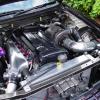Mounting Oil Cooler Between Fmic & Radiator
Announcements
-
Similar Content
-
Latest Posts
-
Make sure you drop the GTT base tune back in, and set your injectors again, this will remove anything playing up with it you may have removed. Possibly lean there as it's normally a fast transient going THROUGH atmospheric pressure, and a turbo motor would then quickly go richer as boost builds. The only worry you MIGHT have is ignition timing, as the DE is higher compression than the DET from memory. But again, you're not in boost, so the DE motor will be a lot more forgiving at atmospheric. Get Murray, Kinkstahs, and Johnny's input on tuning haltechs, those guys have played with tuning enough in the past to be able to help now you're past the trouble shooting stage of the MAP issue
-
@Rusty NutshI mate. Do you have a pinout diagram for the na neo auto ecu?
-
By Murray_Calavera · Posted
Have a chat with the tuner, you'd want to drive the car straight there. -
By Harinder singh · Posted
My mechanic installed all the parts and then got it tuned which i think is around the corner from him
-






Recommended Posts
Create an account or sign in to comment
You need to be a member in order to leave a comment
Create an account
Sign up for a new account in our community. It's easy!
Register a new accountSign in
Already have an account? Sign in here.
Sign In Now